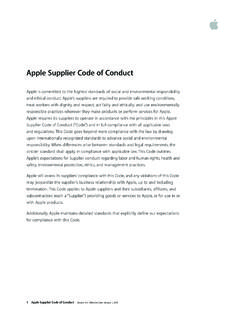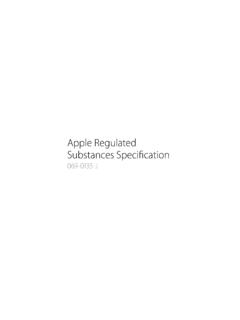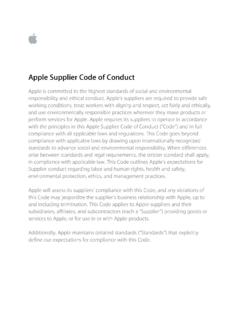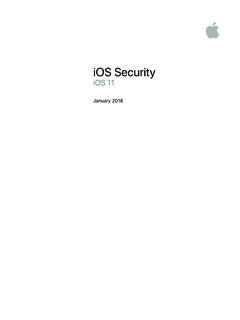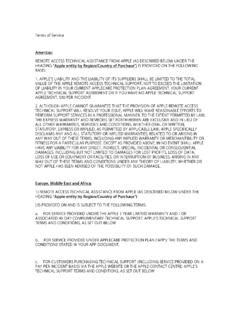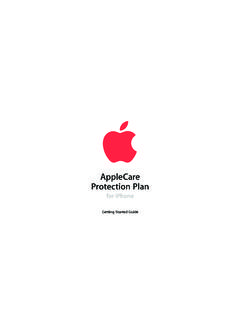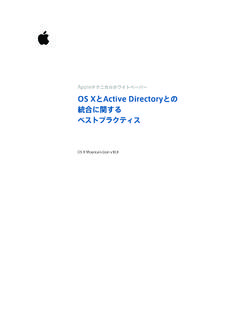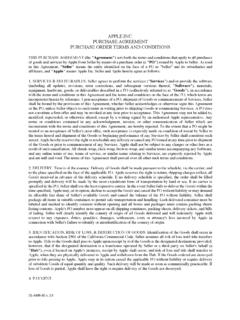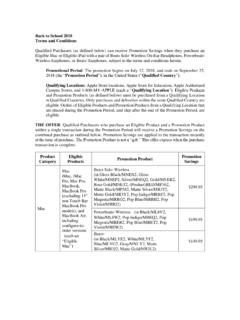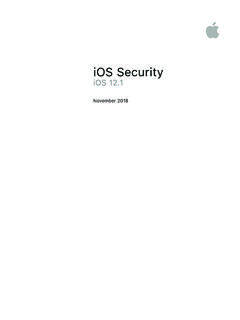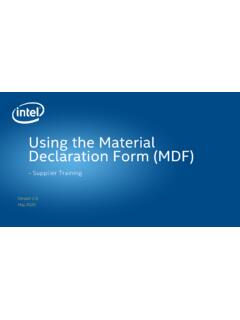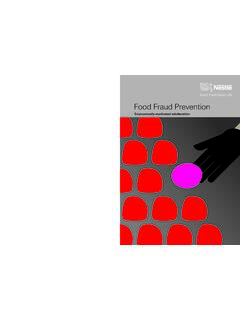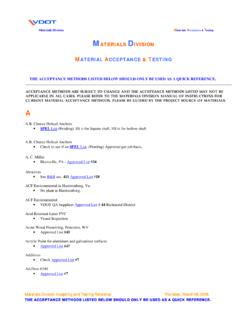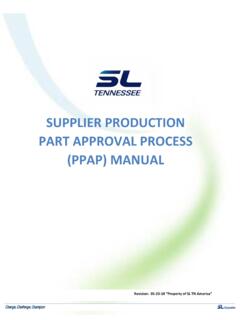Transcription of Apple Material Impact Profiles
1 Material Impact Profiles Which materials to prioritize for a 100 percent recycled and renewable supply chain 2019 Our Ambition: An Overview At Apple , we believe we have a responsibility to leave the world better than we found it. So we established three environmental priority areas where we believe we can make the greatest difference: Reduce Apple s Impact on climate change by using renewable energy, driving energy efficiency in products and facilities, and addressing the entire lifecycle of all our products and accessories. Conserve precious resources by using materials efficiently, using more recycled and renewable content in products, and recovering Material from products at the end of their life.
2 Identify, develop, and utilize safer materials in products and processes. We already have programs in place to ensure that the materials we use in our products are sourced responsibly. We apply strict standards and internationally accepted frameworks, such as the Organisation for Economic Co-operation and Development (OECD) due diligence guidance, to drive progress and protect people in our supply chain. Now, to protect the Earth s finite resources, we re also challenging ourselves to one day end our reliance on mining altogether. In the spring of 2017, we made public our commitment to using only recycled and renewable Material in our products.
3 It s an ambitious goal that will require years of collaboration across Apple teams, our suppliers, and recyclers but our work is already underway. The main principles underlying our goal are to make products more efficiently, make them durable, and make them using only recycled or renewable Material . And then when necessary, put Material back onto the market to be used by us or others. For finite materials such as aluminum or steel, this means both sourcing recycled Material and recycling scrap and end-of-life products into raw Material for Apple or others to use again. For renewable materials such as the wood fiber in our packaging, our focus is on both responsible sourcing and regeneration of supply that either Apple or others could use.
4 Material Impact Profiles 2 Renewable materials marketSourceContributeRecycled materials market Create andprotectCollectMakeUseRecoverFigure 1: How we define a circular supply chainWe have a long way to go, and there are many challenges to our ambition. Technical and economic hurdles can prevent efficient recovery of materials to the same quality as the original primary source. In many cases, achieving our goal will require developing new recovery technologies, new materials, and new ways of doing business. Prioritizing Materials Our supply chain is complex and we use a vast number of unique materials in our products.
5 So we needed a way to identify and prioritize which raw materials would provide the greatest benefit if the majority of global production moved to a recycled and renewable supply base. In 2014, when we first reviewed existing methodologies for assessing impacts, we found that most focused only on the potential for a supply disruption and subsequent negative consequences. Knowing that more was needed, we worked with Oeko-Institut to develop Material Impact Profiles (MIPs), which quantify not only the generalized supply impacts of a mined Material but also the environmental and social impacts. Using publicly available data, we comprehensively evaluated impacts in the value chains of 45 elements and raw materials commonly used in consumer electronics.
6 We then weighted these MIPs by the quantity of Material Apple uses to identify those materials where Apple likely has the best ability to have a positive Impact on the planet. Finally, in addition to the weighted score assigned to each Material , we considered additional qualitative factors, like whether a Material represents unique opportunities for new supply chain models or is significant to the customer experience such as the glass they touch or the paper packaging they open. Through this process, we identified a short list of materials on which to focus our initial efforts, and have active projects in aluminum, cobalt, copper, glass, gold, lithium, paper, plastics, rare earth elements (neodymium, praseodymium, dysprosium), steel, tantalum, tin, tungsten, and zinc.
7 We recognize that this transition to 100 percent recycled and renewable Material will take many years, and will require entire industries to join in the effort. And as we strive toward this goal, we will continue our work to ensure that materials are sourced and processed in a manner that meets our strict requirements while we also work to protect the rights of those in our supply chain. Existing Methodologies In 2014, during the early phases of the project, Apple evaluated multiple publications on materials criticality and impacts in Material supply chains (see Appendix A). Various methodologies already existed for measuring the relative importance of raw materials, with some following and others building on traditional supply risk assessments.
8 Governments, for example, had created methods for identifying materials key to national economies and at risk of supply shortages.,, Organizations also created sector- and industry-specific 123assessments for materials that were being used in new ways, such as the Department of Energy s evaluation of key materials in clean energy technologies. In addition, other companies had developed 4methodologies targeted to their specific business interests., Across methodologies, organizations typically 56determined a Material was critical if its supply might be disrupted and if that disruption would significantly Impact the organization.
9 , 78 Two key groups have looked beyond supply risks in assessing materials. In 2017, Fairphone partnered with The Dragonfly Initiative to prioritize materials for sustainable sourcing efforts, and focused on environmental risks in the assessment. And in 2018, Drive Sustainability, the Responsible Minerals 9 Initiative, and The Dragonfly Initiative released the report Material Change, which considers the supply, Material Impact Profiles 3environmental, and social impacts of materials. We are encouraged by the increasing engagement on this 10topic and hope to see further adoption of such initiatives across the industry.
10 For Apple , assessing only the risk to global supply was not enough. We worked with our partners to create an assessment that includes not only impacts to supply, but also environmental and social impacts throughout the global supply chain. This assessment is designed to evaluate the global landscape, not risks specific to Apple s supply chain or impacts of sourcing practices on local communities. Our aim was to make these assessments useful to others; shifting to a 100 percent recycled and renewable supply chain requires a global perspective, as we need to shift entire industries to a new way of doing business.
